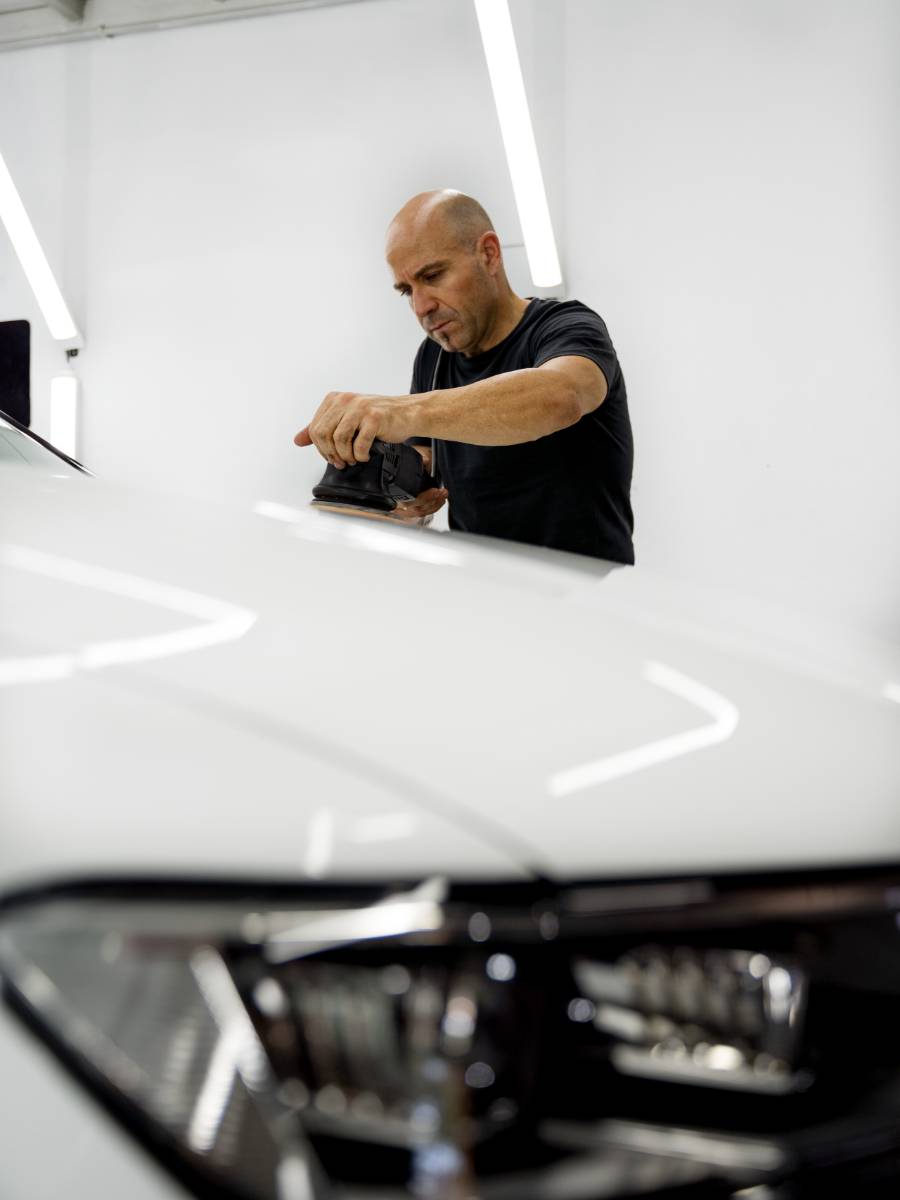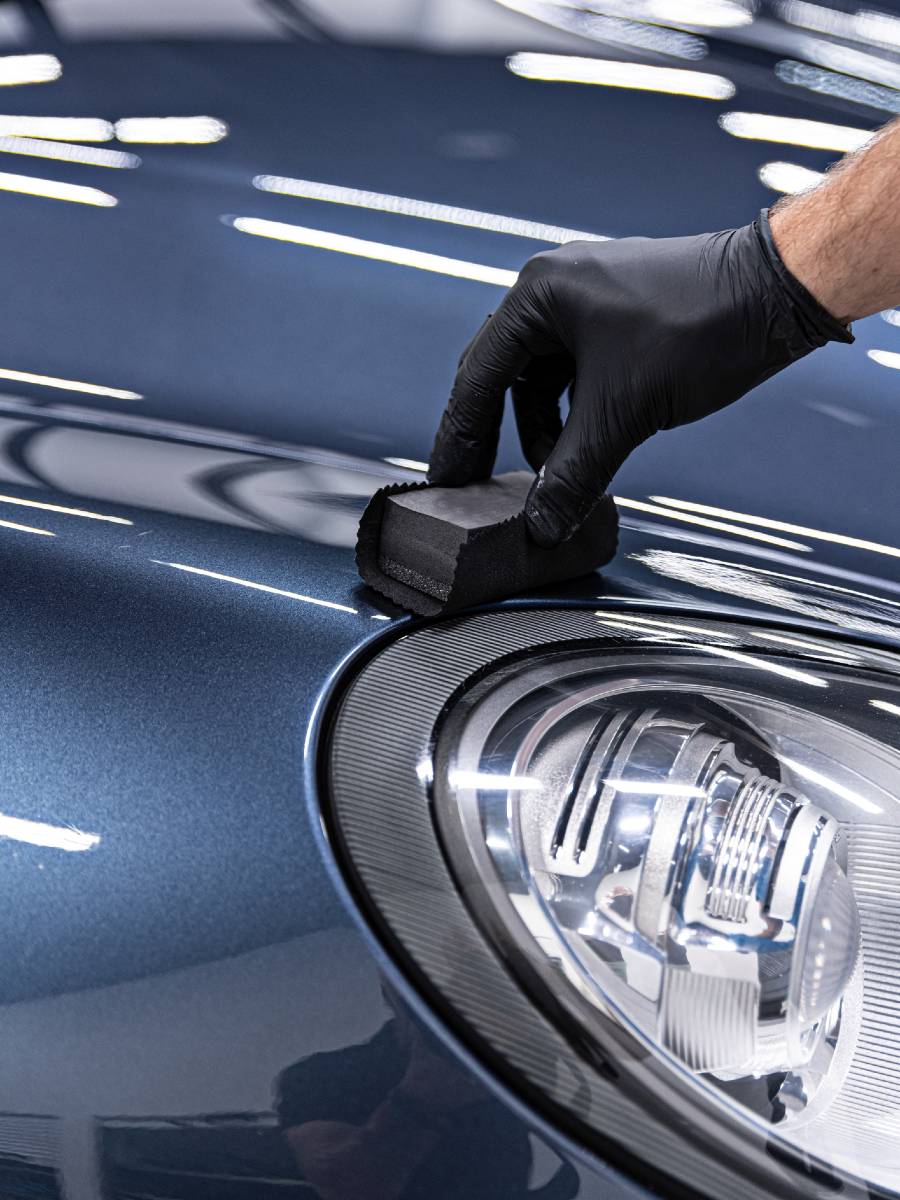Ceramic Covering vs. Standard Wax: Which Offers Better Long-Term Defense?
The debate in between ceramic layers and typical wax for lorry defense has amassed considerable attention among vehicle lovers and experts alike. Ceramic coverings flaunt remarkable durability and resistance to environmental variables, yet the intricacy of their application raises questions about accessibility and usefulness.
Review of Ceramic Finishing
Ceramic finish has gotten significant appeal amongst vehicle lovers and detailers alike as a result of its advanced safety qualities. This cutting-edge modern technology is developed to create a resilient, hydrophobic shield over a vehicle's paint surface, dramatically boosting its resistance to ecological impurities such as dirt, UV rays, and chemical stains. Unlike conventional wax, which provides a momentary layer of defense, ceramic coatings bond at a molecular level with the paint, offering durable toughness-- often extending past two years with correct maintenance.
The application procedure involves thorough prep work of the lorry's surface, consisting of cleansing and brightening to guarantee ideal adhesion. Once applied, the layer treatments to create a durable layer that not only adds deepness and gloss to the paint but additionally simplifies upkeep. With its hydrophobic buildings, ceramic finishing enables water and dust to slide off more conveniently, decreasing the regularity of laundries and decreasing the threat of swirl marks.
Furthermore, ceramic layers are readily available in different formulas, allowing individuals to pick items tailored to their specific needs and choices. In general, ceramic layer represents a significant advancement in paint security innovation, delivering exceptional efficiency contrasted to standard options.
Summary of Standard Wax
Typically pertained to as a staple in automotive care, wax serves as a popular selection for those looking for an uncomplicated approach to improve and shield their automobile's paint - ceramic coating. Automotive wax normally makes up natural active ingredients, such as carnauba, or synthetic compounds, designed to develop a protective layer on the surface of the paint. This layer not only boosts the lorry's gloss and radiate but additionally offers an obstacle against environmental impurities
The application of wax is usually user-friendly, making it available for both specialists and DIY fanatics. When used, wax requires a healing period, after which it sets to create a protective covering.
Nonetheless, while wax works for improving the visual appeal of a car, it is important to note that the protection it offers may necessitate a lot more constant reapplication contrasted to alternative items, such as ceramic finishings. Overall, traditional wax continues to be a favored option for those prioritizing ease of usage and instant visual renovation.
Sturdiness and Durability Comparison
While both ceramic coatings and typical wax deal safety benefits for auto paint, their sturdiness and long life vary considerably. Traditional wax, usually made from natural carnauba or artificial polymers, typically supplies a safety layer that lasts about 3 to 6 months. This fairly short life expectancy requires routine reapplication to keep optimal protection.
On the other hand, ceramic layers are crafted from advanced nanotechnology, developing a covalent bond with the paint surface. This leads to More Help a durable, hydrophobic layer that can sustain for 2 to five years, relying on the product and environmental problems. The superior resilience of ceramic coverings is credited to their chemical framework, which uses boosted resistance to scrapes, UV rays, and oxidation.

Protection Versus Ecological Factors
Securing a car's paint from ecological variables is critical for keeping its appearance and worth over time. Autos are continuously exposed to a variety of elements, including UV rays, bird droppings, tree sap, acid rainfall, and roadway crud, all of which can compromise the stability of the paintwork.
Ceramic finishes offer a robust protection against these environmental assailants. Unlike conventional wax, which can weaken promptly under UV direct exposure, ceramic coatings develop a durable, hydrophobic layer that stands up to the hazardous results of sunlight and toxic wastes. This advanced technology develops a chemical bond with the lorry's surface area, using remarkable security that lasts for many years, also in severe conditions.
In comparison, ceramic coverings preserve their safety qualities longer, dramatically decreasing the threat of paint damage and making certain that the lorry retains its visual appeal. As a result, ceramic layers are progressively identified as the premium choice for long-lasting defense against environmental aspects.
Application and Maintenance Differences
The approaches of application and subsequent maintenance for ceramic coverings and Check Out Your URL conventional wax vary substantially, affecting the general individual experience and performance of each item. Ceramic coverings call for a more detailed application process, normally entailing surface area prep work that consists of cleaning, sanitizing, and polishing the automobile. When the surface area is prepared, the ceramic layer is used in a regulated environment, often needing expert knowledge to ensure correct treating and bonding to the paint.

While both items improve vehicle appearance, the longer-lasting security offered by ceramic coverings might warrant their first financial investment, despite the more requiring application procedure. a knockout post Conversely, conventional wax remains a popular option for those seeking a less complex, albeit short-term, solution.

Final Thought
To conclude, ceramic coverings demonstrate significant advantages over typical wax in terms of sturdiness and environmental security. With a life expectancy extending two to five years and premium resistance to UV rays, dirt, and chemical spots, ceramic coverings offer a more efficient solution for long-term car maintenance. The application procedure may require professional know-how, the resulting cost savings and lowered regularity of reapplication highlight the worth of ceramic coverings for those looking for optimal automobile security.
The discussion between ceramic finishings and typical wax for car protection has actually garnered substantial focus amongst automobile fanatics and professionals alike. Unlike typical wax, which provides a short-term layer of defense, ceramic finishes bond at a molecular degree with the paint, supplying long-lasting resilience-- usually expanding beyond two years with proper upkeep.
While both ceramic coatings and typical wax offer protective benefits for automotive paint, their resilience and long life vary substantially. For auto enthusiasts seeking long-lasting security, ceramic finishings provide a compelling advantage over typical wax items.
In verdict, ceramic coverings show substantial benefits over conventional wax in terms of durability and environmental security.